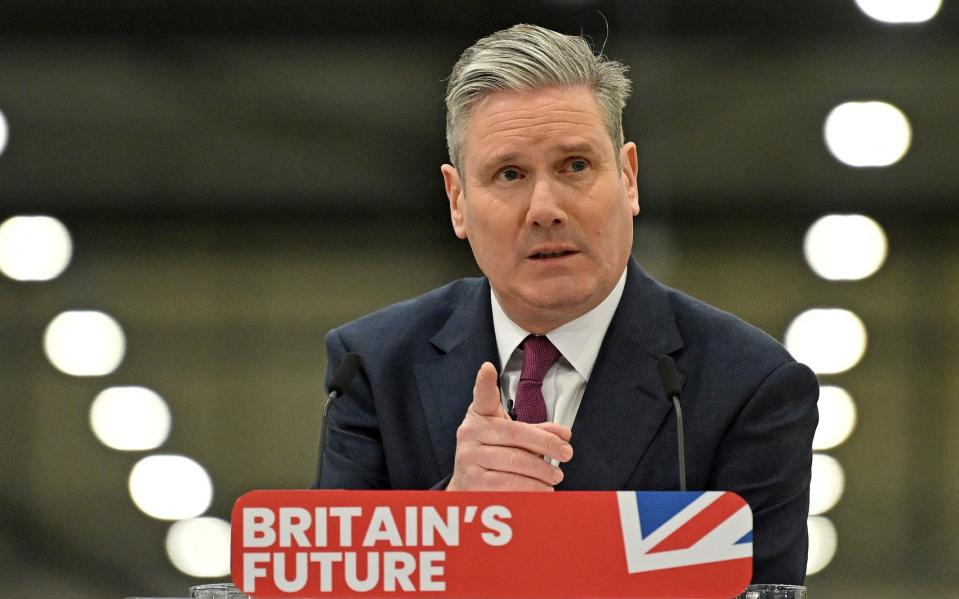In recent remarks at the Interpol conference, Sir Keir Starmer reaffirmed a familiar commitment to reduce net migration and address the UK’s economic dependency on it. However, his pledge reflects a long-standing pattern of political promises regarding UK immigration that have historically fallen short, leaving the public sceptical of unfulfilled assurances. Starmer’s aims echo those of former leaders like David Cameron, Boris Johnson, and Rishi Sunak, who all grappled with similar goals, yet faced significant barriers when it comes delivering results. This historical context highlights the challenges Starmer faces in distinguishing his immigration strategy from those of his predecessors.
A History of Unmet Immigration Targets
David Cameron’s 2010 pledge to bring net migration down to the ‘tens of thousands’ set an ambitious precedent, which has since haunted subsequent administrations. Although he made bold claims, net migration numbers consistently exceeded 200,000, peaking at over 300,000 (Office for National Statistics, Migration Statistics Quarterly Report, 2020). This failure not only eroded public trust but also highlighted the limitations of political promises in the face of complex immigration realities.
Boris Johnson’s tenure further illustrated the difficulties of delivering on immigration control. Although he initially thought of Brexit as a strategy to ‘take back control’ of immigration, his tenure concluded with net migration exceeding 700,000, (Office for National Statistics, Migration Statistics Quarterly Report, 2021), a marked contrast to his initial assurances. This outcome revealed the complexities of managing immigration in a post-Brexit landscape, where newfound control over borders did not necessarily translate into reduced immigration levels.
The Economic Impact of Brexit and Restrictive Immigration Policies
Brexit, aimed partly at controlling UK immigration, introduced significant economic strain, particularly on small and medium-sized enterprises (SMEs). Since the UK’s departure from the EU, businesses have encountered unprecedented challenges. Stricter immigration controls have limited access to a once-reliable European workforce, compounding these issues and leading to heightened labour shortages.
In the first quarter of 2021, UK exports to the EU fell by nearly 20%, placing additional strain on firms already grappling with the new regulatory environment (Office for National Statistics, UK Trade, 2021). Faced with these challenges, approximately 250 businesses have moved or are considering relocation to EU countries like Germany to retain market access and mitigate logistical disruptions (EY Brexit Tracker, 2021; British Chambers of Commerce, 2021). The cumulative impact of these factors has seen numerous businesses either shut down or reduce operations, underscoring the economic costs of restrictive immigration policies without supportive frameworks.
The Shortage Occupation List and Skills Gaps
The UK’s Immigration Salary List (ISL), previously known as Shortage Occupation List (SOL), reflects critical skill gaps that, if left unaddressed, will continue to constrain economic growth. Yet, despite this clear indicator of needed skills, successive governments have lacked a robust plan to bridge these gaps through domestic skill-building initiatives. A sustainable immigration policy that reduces dependency on overseas talent must include streamlined pathways for residents to gain in-demand skills. Failure to focus on local skill-building and vocational training aligned with the ISL will impede economic resilience and make any attempts to limit net migration increasingly difficult to implement effectively.
Economic Dependency on Immigration and Public Spending Implications
Former ministers highlighted many times that different government departments have conflicting goals. For example, the Home Office wants to reduce the number of people coming into the country, while the Treasury wants more workers to increase tax revenue. The Health Ministry depends on foreign workers to keep the NHS running smoothly, and the Business Department wants to attract entrepreneurs to boost the economy. These differing priorities create challenges when it comes to managing immigration policy.
Former Home Secretary Suella Braverman highlighted this when she warned that halving net migration to 300,000 could result in a £3 billion loss to the UK economy. This revenue is crucial for funding public services, maintaining fiscal stability, and supporting social programs. Such fiscal realities expose the inherent tensions between calls for stricter immigration controls and the economic reliance on a steady influx of migrant workers to drive tax revenues.
In a nation where immigration contributes to workforce stability, productivity, and innovation, a sudden decrease in migration without adequate measures to upskill the domestic population would risk severe economic repercussions. The government’s challenge, then, is to align immigration targets with economic realities, acknowledging that immigration, when strategically managed, strengthens the workforce and supports economic vitality.
External Factors and Competing Interests
A range of external factors has also influenced immigration patterns and made it difficult for leaders to meet their goals. Economic crises, like the eurozone crisis, brought an influx of young workers to the UK in search of opportunities, while global events, including humanitarian crises in Hong Kong and Ukraine, led to significant visa issuances. These unforeseen events have often forced governments to adapt policies on short notice, complicating efforts to manage migration numbers effectively.
Anand Menon, Professor of European Politics at King’s College London, has pointed to a ‘fundamental dishonesty’ within UK immigration policy, emphasising the contradictory interests of different government departments. The Home Office, tasked with reducing immigration, frequently finds itself at odds with departments, which benefits from higher immigration levels to boost workforce participation and tax revenue. This inconsistency creates confusion among the public and fosters a sense of dishonesty.
Conclusion: Building a Balanced and Sustainable Immigration Policy
Starmer’s challenge lies in balancing the need for controlled immigration with the realities of an economy that, in many ways, is deeply connected to the contributions of migrants. Any sustainable immigration policy must be transparent about trade-offs and proactively address skills shortages by investing in education, immigration pathways and training that aligns with the Immigration Salary List. Will Keir Starmer finally shatter the cycle of broken promises and deliver a solution that meets the urgent demands of a strained economy, divided public opinion, and sectors on the brink? With businesses, communities, and national stability hanging in the balance, the question remains: can Starmer’s immigration policy rise to the challenge, or will the UK be left to confront yet another legacy of missed opportunities and unmet needs?
Morgan Smith Immigration, an award-winning firm with over 20+ years of expertise in UK Visa and Immigration, is here to assist you with all your visa and immigration needs. Morgan Smith Lawyers urges leaders, including Sir Keir Starmer, to implement policies that prioritise local talent by investing in comprehensive skills development programmes tailored to meet the needs of UK industries. By focusing on building a highly skilled, homegrown workforce, they argue, the UK can reduce its reliance on overseas labour and foster a more sustainable, resilient economy. For any enquiries or assistance, please contact us at 0203 959 3335 or send an email to [email protected]. Stay informed and up to date by following us on Twitter, Instagram, Facebook, LinkedIn, and TikTok. Also, don’t forget to subscribe our channel on YouTube.






